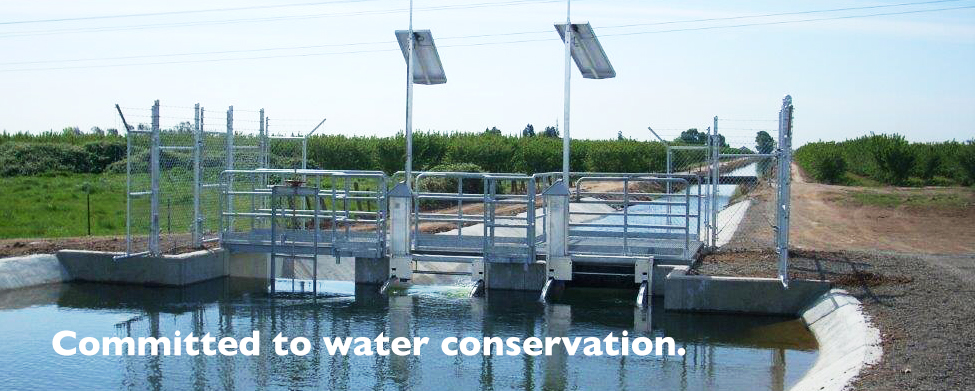
Even before the drought began, the South San Joaquin and Oakdale irrigation districts, the Tri-Dam Project and their customers were committed to water conservation. They appreciate the value and importance of this critical resource. They are dedicated to policies and practices that benefit agriculture, the environment, and domestic and recreational users. In 2015 and 2016 — in the fourth and fifth years of the drought — SSJID’s and OID’s 6,000 farmers saved more than 150,000 acre-feet of water.
Here are some conservation highlights:
South San Joaquin Irrigation District
- Under a coordinated operations agreement with the Bureau of Reclamation and the National Marine Fisheries Service, agreed to implement extreme measures within its district during the drought to generate conservation and place more water into New Melones Reservoir.
- Reduced allocations to farmers during the drought and reinforced a strict anti-theft policy.
- Began delivering pressurized water to some of its farmers in 2012, allowing them to use more efficient micro-irrigation techniques. It resulted in a 30% reduction in water use at those farms and a 30% increase in crop yields. The project also reduced groundwater pumping by an estimated 12,500 acre-feet annually.
- Saved an estimated 2,300 acre-feet a year with installation of electronic flow measurement equipment.
- Invested $3 million to help farmers convert from flood to sprinkler or drip irrigation systems, provide for tail water recovery systems, scientific irrigation scheduling, soil moisture monitoring, ground leveling, regulating reservoirs and other measures. An estimated 2,700 acre-feet of water was saved annually in the past five years.
- Instituted volumetric billing in 2010, which inspired ag customers to reduce their irrigation use in order to lower their costs.
Oakdale Irrigation District
- Under a coordinated operations agreement with the Bureau of Reclamation and the National Marine Fisheries Service, agreed to implement extreme measures within its district during the drought to generate conservation and place more water into New Melones Reservoir.
- Adopted a first-ever allocation policy in 2015 for the district.
- Reduced allocations to farmers during the drought and reinforced a strict anti-theft policy.
- Invested $55 million in canal, conveyance and technological improvements since 2000 to reduce water use and minimize waste.
- Pioneered the Rubicon flow measurement and metering system in the United States, allowing the district to reduce operational spill on certain canals and improve water delivery efficiency to its farmers, creating more on-farm conservation.
- Annexed about 8,000 acres since 2008, providing those farms with access to high-quality surface water while reducing their dependence upon groundwater pumping.
- Instituted volumetric billing in 2016 to inspire ag customers to reduce their irrigation use in order to lower their costs.
Tri-Dam
- Enacted extreme conservation measures along the river system during the drought, reducing the power generated to conserve the available water in upcountry reservoirs.
- Consistently conserves water for use along the Stanislaus River system, as power is generated by Tri-Dam at six generating units and four independent hydro-electric power facilities. This scarce resource is used to provide much needed electricity for California.
- Conserves water to provide environmental habitat enhancement projects as required by the Federal Energy Regulatory Commission to be used for various habitat enhancement projects at each reservoir.
